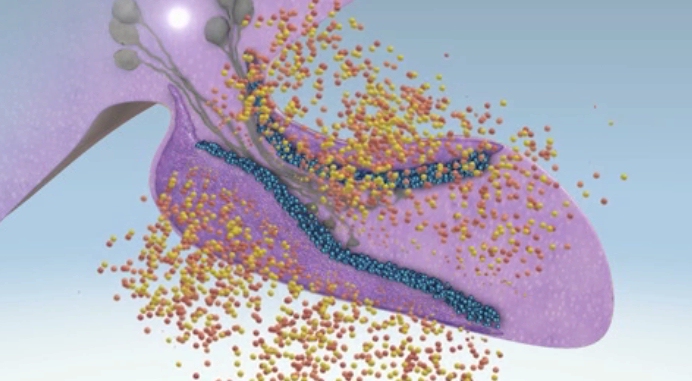|
The Laminitis Revolution - webinar by David Rendle of Liphook Equine Hospital Wed 10 April 8 pm (UK) - open to everyone. The Laminitis Revolution - webinar by David Rendle from Liphook Equine Hospital at 8 pm (UK time - BST) on Wed 10 April 2013, sponsored by Boehringer Ingelheim. Open to anyone, register now to be reminded, opportunity to ask questions by email during the webinar. The webinar will be available as a recording after 10th April for anyone who can't see it live.
0 Comments
PPID is a common disease of horses over 15 (but can be seen in younger horses). Common clinical signs include lethargy, muscle wasting, weight loss, laminitis, infections and hirsutism (long often curly coat that doesn't shed). The mechanism of the disease is different in humans and dogs than in horses, therefore what was called Cushing’s in horses should now be called PPID.
The pituitary gland (master gland) lies at the base of the brain and is responsible for the production of an array of hormones, which circulate throughout the body and regulate the function of various organs. In a healthy horse the release of hormones from the pituitary gland is controlled by the hypothalamus. The hypothalamus generates releasing and inhibiting factors that act on the pituitary gland to stimulate/inhibit the secretion of specific pituitary hormones. The equine pituitary gland is comprised of 3 lobes: pars distalis, pars intermedia (which is affected by PPID) and pars nervosa. In the healthy horse, the production of hormones from the pars intermedia is inhibited by dopamine. Dopamine is released into the pars intermedia from neurons that originate in the hypothalamus. The dopamine binds to dopamine receptors on the surface of the cells of the pars intermedia, like a key in a lock. Once the receptor is occupied by dopamine, the dopamine receptor acts like a brake, inhibiting the production and release of hormones from the pars intermedia. In a healthy horse, ample dopamine is available to evoke a strong inhibitory action by the dopamine receptors to make sure just the right amount of alpha-MSH, beta-endorphin, ACTH and CLIP is produced by the pars intermedia. PPID originates from the degeneration of the dopamine producing neurons in the hypothalamus. The lack of sufficient dopamine in the pars intermedia leads to increased hormone production. The pars intermedia hormone concentrations in a horse with PPID may be more than 100 times greater than in a healthy horse. Absence of dopamine allows the cells of the pars intermedia to divide and enlarge, causing the pituitary gland to increase to 2 to 6 times normal size. Expansion of the pars intermedia causes the other pituitary lobes to become compressed. The lack of dopamine in horses with PPID can be managed by using Prascend. Prascend is a dopamine agonist – it acts to replace the dopamine missing from the pars intermedia. By binding to dopamine receptors, it decreases the secretion of pars intermedia hormones which leads to improvement in symptoms, e.g. improved hair coat, muscle mass and attitude, less risk of developing laminitis and secondary infections. Prascend hasn’t been evaluated in breeding, pregnant and lactating horses – it is a dopamine agonist and therefore may interfere with reproductive hormones, and is likely to prevent/lessen milk production (due to effects on prolactin). |
Articles
Laminitis, EMS or PPID - start here Who said "stop the carrots"? Pituitary stress hormones Should pergolide be increased for the seasonal rise? Are you using illegal supplements? Body Condition Scoring Pituitary Pars Intermedia Dysfunction Equine Metabolic Syndrome and insulin dysregulation TTouch for laminitics 1 Laminitis and the Feet La fourbure et le pied Laminitis, EMS and PPID Testing Insulin Cold Weather Laminitis Rehabilitation – The Owner's Perspective Casareño's recovery P3 - the pedal/coffin bone/third phalanx Vit C and PPID Vetcare Webinars Andy Durham 2013 Movement - good or bad? Pulsatility of ACTH Starting pergolide/Prascend Managing horses with PPID - Marian Little & Dianne McFarlane Is it PPID or is it EMS? FAQ: Rehabilitating the feet after laminitis Diet for weight loss Please report adverse reactions to Prascend Splitting Prascend tablets Measuring Collateral Grooves General Laminitis Quiz Body Condition Scoring Video Video comparing PPID symptoms and normal aging McFarlane 2011 Equine PPID Pharmacokinetics of Pergolide Mesylate in Horses - Rendle et al. 2013. EVA foam pads Rehabilitating the Laminitic Foot - Scott Morrison DVM Anaemia and Iron Supplements Early symptoms of PPID. Don't raise the heel! The Laminitis Site is now a charitable company! Izmir returns to work after laminitis in all 4 feet. Trimming the laminitic horse. A balanced foot. The circumflex artery and solar corium necrosis. What do you know about PPID? Laminitis myths. Frosty grass = high sugar! There are no magic potions! Is injected pergolide more effective than oral? Risk Factors for Equine Metabolic Syndrome - Dr Nichol Schultz Fly free Homey pony. Sorrel's doing great! Celebrating Homer's results! The Horse.com Ask the vet live: PPID. If the bone moves - move it back! Always get a diagnosis! Horses with laminitis need pampering! Autumn is the best time to test for PPID. Archives
March 2019
|


 RSS Feed
RSS Feed